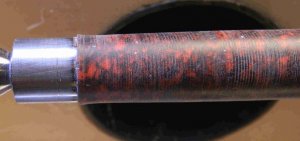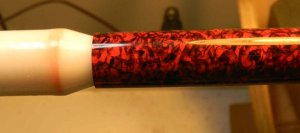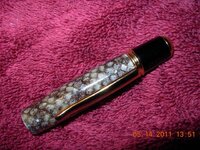randyrls
Member
I was turning a set of blanks this evening when just about the time I got the blank to size I started noticing small white spots. Tiny bubbles in the acrylic!
I tried to fill the spots with thin CA, but wasn't able to remove them completely. The white spots on dark red were VERY noticeable! This blank is very pretty, and I didn't want to throw it away. I remembered that I have some Transtint Dye I used with dyed wood burl blanks to make the colors "POP"!
The Transtint made the spots disappear, and then a quick coat of CA finish completed the job! This blank looks FABULOUS!
Can't wait until tomorrow and turning the nib section.
I tried to fill the spots with thin CA, but wasn't able to remove them completely. The white spots on dark red were VERY noticeable! This blank is very pretty, and I didn't want to throw it away. I remembered that I have some Transtint Dye I used with dyed wood burl blanks to make the colors "POP"!
The Transtint made the spots disappear, and then a quick coat of CA finish completed the job! This blank looks FABULOUS!
Can't wait until tomorrow and turning the nib section.



